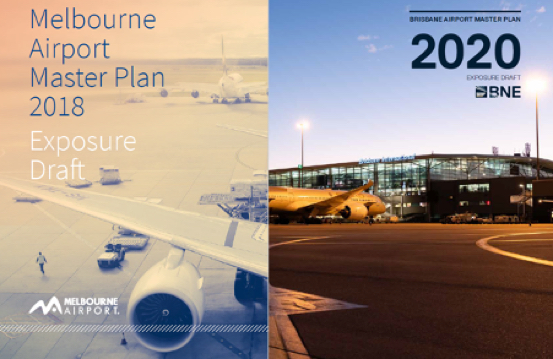To assess proposed wind farm applications, we require an Aviation Impact Statement (AIS) be submitted along with your application. We recommend you engage an aviation consultant to prepare the AIS.
Guidelines to manage the risk to aviation safety from wind turbine installations (wind farms and wind monitoring towers) have been developed by the National Airports Safeguarding Advisory Group (NASAG). NASAG is chaired by the Department of Infrastructure, Transport, Regional Development, Communications, Sport and the Arts, and includes other Commonwealth agencies (such as Airservices, Civil Aviation Safety Authority (CASA) and Defence), and representatives from State and Territory transport and planning departments. One of NASAG’s key functions is to develop national land use planning policies and guidelines for developments around airports and under flight paths.
NASAG’s wind farm guidelines (Guideline D - Managing the Risk of Wind Turbine Farms as Physical Obstacles to Air Navigation) provide information to help identify any potential safety risks posed by wind turbines and wind monitoring installations from an aviation perspective.
Potential safety risks include (but are not limited to) impacts on our flight procedures, and communications, navigation and surveillance assets.
Aviation Impact Statement (AIS)
An AIS must be developed by an aeronautical consultant with suitable knowledge and capabilities to provide a reliable and comprehensive assessment of the potential impacts on aviation from the proposed development. The AIS (and any associated data) should be sent to us in electronic form, together with your assessment request. If you are not familiar with any aeronautical consultants, the Australian Airports Association (AAA) website provides a comprehensive list.
AIS Criteria
The AIS must provide a detailed analysis covering, as a minimum:
Airspace Procedures
- Obstacles
- Co-ordinates in WGS84 or GDA94 (to 0.1 second of arc or better).
- Elevations in metres (m) Australian Height Datum (AHD) to 0.3 metres accuracy.
- Drawings
- Overlayed on topographical base, at not less than 1:250,000 scale. Details of datum and level of charting accuracy to be noted.
- Electronic format compatible with Microstation version V8i.
- Aerodromes
- Specify all registered/certified aerodromes that are located within 30NM (55.56km) from any obstacle referred to in (1) above.
- Identify all instrument approach and landing procedures at these aerodromes.
- Confirm that the proposed development (known as a potential “obstacle”) does not penetrate the Annex 14 Obstacle Limitation Surface (OLS) for any aerodrome. If a potential obstacle does penetrate the OLS, the AIS should clearly specify the extent of the penetration.
- Air Routes
- Identify air routes published in Airservices AIP Charts, Enroute Chart – Low (ERC-L) and Enroute Chart – High (ERC-H), which are located near or over any potential obstacle referred to in (3) above.
- Specify two waypoint names located on the routes that are located on either side of the potential obstacle.
- Airspace
- Identify the airspace classification (i.e. A, B, C, D, E, G etc.) where the potential obstacles are located.
Navigation/Radar
- Detect the presence of dead zones.
- False target analysis.
- Target positional accuracy.
- Probability of detection.
- Radar coverage implications.
- The AIS should follow the guidelines outlined in the latest version of the EUROCONTROL Guidelines on How to Assess the Potential Impact of Wind Turbines on Surveillance Sensors.
NOTE: Within the Eurocontrol Guidelines there are specific assumptions about the type of wind turbine for which the guidelines are applicable (i.e. with 3 blades, 30-200m in height, and a horizontal rotation axis). For any deviations to the wind turbine characteristics listed within the Eurocontrol Guidelines, you should include a justification in your application for why these guidelines are still applicable (or use alternative guidelines).
Airservices Review of an AIS
We will review the quality and completeness of an AIS, and will undertake limited modelling and analysis to confirm its findings and recommendations.
Provided the AIS is of sound quality and is completed in accordance with the above criteria, there is no charge for the review or limited modelling and analysis.
If the AIS is not of sound quality, or is not completed in accordance with the above criteria, no modelling or analysis will be undertaken. We will advise you if the AIS does not meet our assessment requirements.
If our review of the AIS confirms potential aviation impacts, identified in the AIS, or identifies additional impacts, we will advise you of these impacts and the required mitigating actions (where mitigation is feasible). You will also be advised if there are charges for mitigation actions undertaken by Airservices.
These charges may be advised at the time, but it is likely that a detailed quote will be needed - we will only provide this on request.

